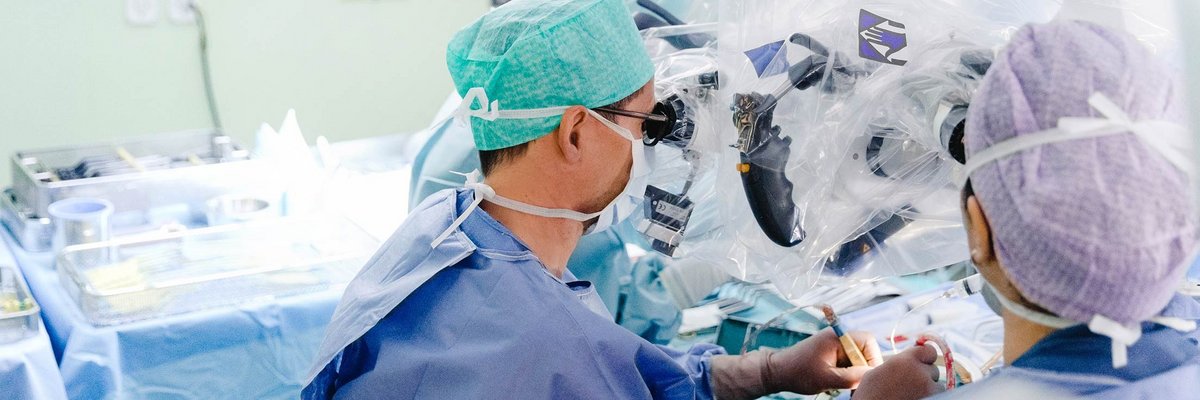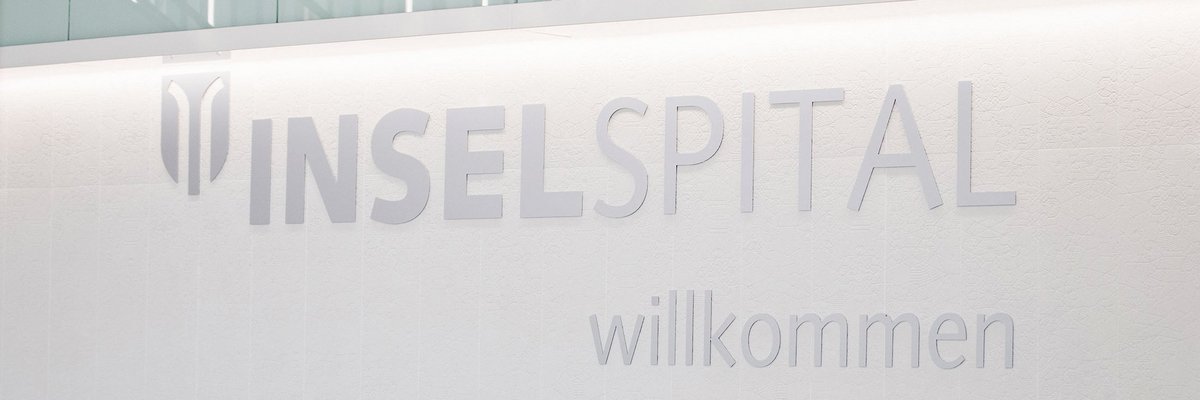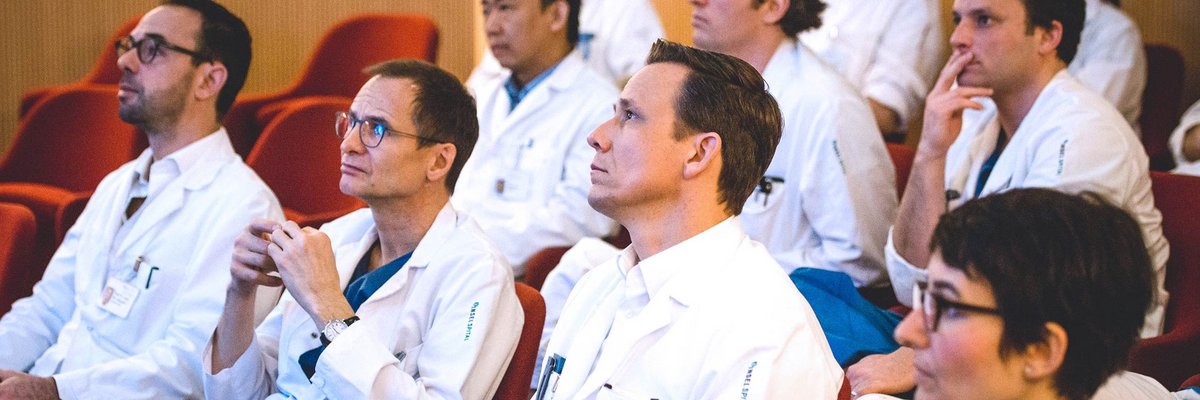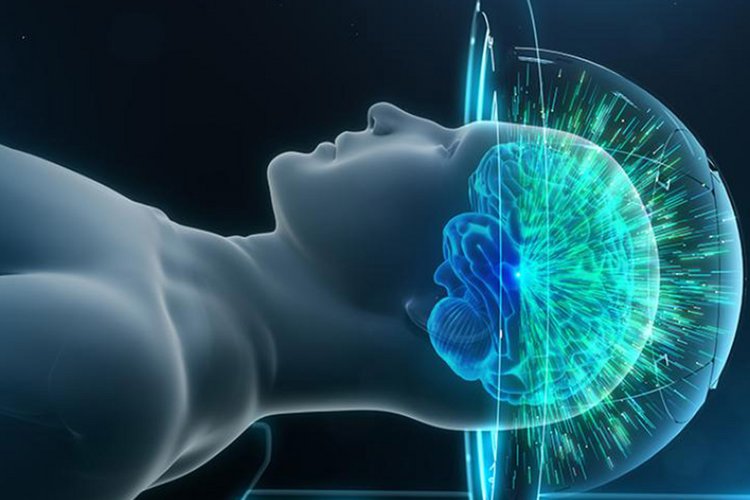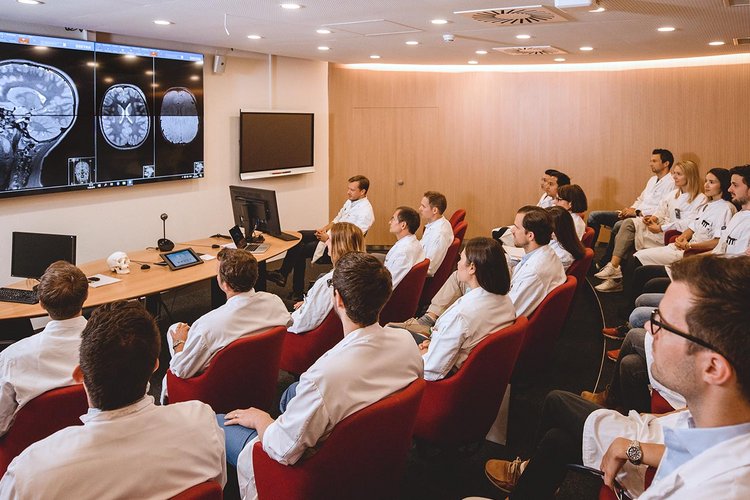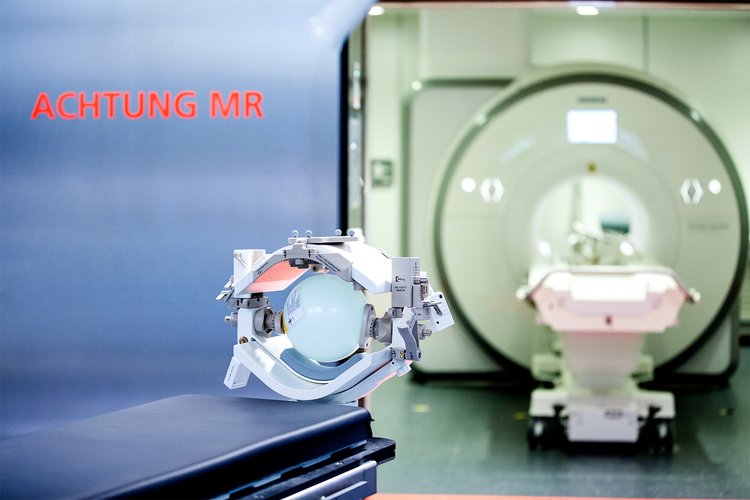Department of Neurosurgery
The Department of Neurosurgery at the Inselspital, Bern University Hospital, is an internationally renowned clinic for the surgical treatment of diseases of the brain and spine. We would like to inform you about our clinic and make it easier for you to contact us. Welcome!
News
For some time now, the Hearing Implant Center at Inselspital has been offering the auditory brainstem implant (ABI). This expands the range of hearing implants and therapies for deaf or hard of hearing patients. This interdisciplinary procedure, performed by ENT surgeons, ENT engineers and neurosurgeons from Inselspital, is supported by the expertise of Prof. Dr. Robert Behr, a world-renowned pioneer in this field. He has come from abroad especially for this rare and demanding operation.
Video: A look behind the scenes of an ABI implantation
Prof. Dr. Behr, a neurosurgeon, has not only performed this procedure himself all over the world, but has also introduced neurosurgeons and ENT specialists from Asia, America, Africa and Europe to ABI implantation. He was the first surgeon worldwide to connect an electronic microprobe directly to the auditory nerve nucleus in the brainstem of a patient. Since then, he has performed more than 180 of these demanding surgeries – mostly on children.
An auditory brainstem implant is used for disorders in the area of the auditory nerve that prevent or block the transmission of sounds to the brainstem. The resulting hearing experience with the implant enables an improvement in lip-reading and the ability to distinguish between everyday sounds. In exceptional cases, even free word comprehension can be achieved.
The procedure requires close collaboration across various disciplines: an interdisciplinary team evaluates in advance whether a patient is suitable for such an intervention. During the operation itself, the neurosurgeon places the electrodes on the brainstem in collaboration with the ENT surgeons and ENT engineers, who are responsible for the measurements. Anesthesia and nursing also play an important role.
Related Links
- Doctor profile of Prof. Dr. med. Georgios MantokoudisDeputy Head Physician, University Clinic for Ear, Nose and Throat Diseases, Head and Neck Surgery
- Doctor profile of PD Dr. med. Levin HäniAttending Physician of the Department of Neurosurgery
- ABI surgeryProf. Dr. med. Robert Behr, former senior consultant in neurosurgery at Fulda Clinic and an expert in the field of auditory brainstem implants, introduces ABI implantation to neurosurgeons and ENT specialists from around the world
- Hearing Implant Center, Inselspital, Bern University HospitalThe Hearing Implant Center offers people with hearing disorders individual and thus the best possible hearing care.
Media tips
For some time now, the Hearing Implant Center at Inselspital has been offering the auditory brainstem implant (ABI). This expands the range of hearing implants and therapies for deaf or hard of hearing patients. This interdisciplinary procedure, performed by ENT surgeons, ENT engineers and neurosurgeons from Inselspital, is supported by the expertise of Prof. Dr. Robert Behr, a world-renowned pioneer in this field. He has come from abroad especially for this rare and demanding operation.
Video: A look behind the scenes of an ABI implantation
Prof. Dr. Behr, a neurosurgeon, has not only performed this procedure himself all over the world, but has also introduced neurosurgeons and ENT specialists from Asia, America, Africa and Europe to ABI implantation. He was the first surgeon worldwide to connect an electronic microprobe directly to the auditory nerve nucleus in the brainstem of a patient. Since then, he has performed more than 180 of these demanding surgeries – mostly on children.
An auditory brainstem implant is used for disorders in the area of the auditory nerve that prevent or block the transmission of sounds to the brainstem. The resulting hearing experience with the implant enables an improvement in lip-reading and the ability to distinguish between everyday sounds. In exceptional cases, even free word comprehension can be achieved.
The procedure requires close collaboration across various disciplines: an interdisciplinary team evaluates in advance whether a patient is suitable for such an intervention. During the operation itself, the neurosurgeon places the electrodes on the brainstem in collaboration with the ENT surgeons and ENT engineers, who are responsible for the measurements. Anesthesia and nursing also play an important role.
Related Links
- Doctor profile of Prof. Dr. med. Georgios MantokoudisDeputy Head Physician, University Clinic for Ear, Nose and Throat Diseases, Head and Neck Surgery
- Doctor profile of PD Dr. med. Levin HäniAttending Physician of the Department of Neurosurgery
- ABI surgeryProf. Dr. med. Robert Behr, former senior consultant in neurosurgery at Fulda Clinic and an expert in the field of auditory brainstem implants, introduces ABI implantation to neurosurgeons and ENT specialists from around the world
- Hearing Implant Center, Inselspital, Bern University HospitalThe Hearing Implant Center offers people with hearing disorders individual and thus the best possible hearing care.

